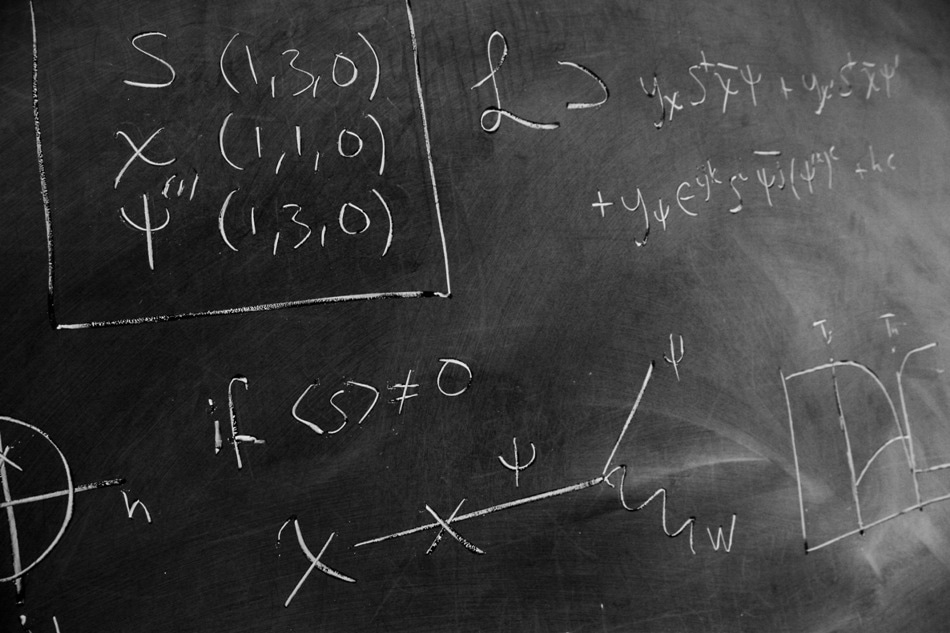Aug 9 2017
It is a known fact that only a small fragment of the universe comprises of visible matter and that the remaining vast regions are hidden from human eyes and include dark energy and dark matter. Although knowledge on dark energy is highly limited, various experiments and theories on the presence of dark matter, formulated to detect these unexplored particles, do exist.
At present, Researchers from the Johannes Gutenberg University Mainz (JGU) have proposed an innovative concept related to the formation of dark matter immediately following the genesis of the universe. This innovative theory offers a substitute to the weakly interacting massive particle (WIMP) paradigm which is the subject matter of many experiments in present study.
 Calculations for the new dark matter model developed at Mainz University. CREDIT: Michael Baker.
Calculations for the new dark matter model developed at Mainz University. CREDIT: Michael Baker.
The universe is largely distributed with dark matter that forms galaxies and some of the enormous structures in the universe. Nearly 23% of the cosmos is made of dark matter. By contrast, the visible particles that form the planets, stars, and also life on Earth constitute just 4% of it. The prevalent hypothesis states that dark matter is a cosmological artifact that has primarily been stable from the time it was formed.
We have called this assumption into question, showing that at the beginning of the universe dark matter may have been unstable.
Dr. Michael Baker, the Theoretical High Energy Physics (THEP) group, the JGU Institute of Physics
Such an instability also points toward the presence of an innovative mechanism that elucidates the detected amount of dark matter in the universe.
In general, a symmetry principle elucidates on the stability of dark matter. Yet, Dr. Michael Baker and Professor Joachim Kopp show in their study that there might have been a phase in the universe during which the symmetry was interrupted. This might indicate that there is every possibility for decay of the hypothetical dark matter particle. In the course of the electroweak phase transition, the symmetry stabilizing the dark matter might have been reestablished, thus allowing it to be continually present in the cosmos to date.
As part of their innovative hypothesis, Baker and Kopp have presented an innovative principle toward the discussion on the attributes of dark matter, which is a substitute to the broadly approved WIMP theory. To date, WIMPs have been considered to be the most probable constituents of dark matter. Moreover, various experiments have been carried out with the help of highly shielded underground detectors to detect the WIMPs.
The absence of any convincing signals caused us to start looking for alternatives to the WIMP paradigm.
Professor Joachim Kopp
Both the Physicists stress that their new theory might be related to the noticeable imbalance between antimatter and matter in the universe and could leave an impression which can be observed in upcoming experiments on gravitational waves. Baker and Kopp, in their paper published in the Physical Review Letters, have specified the probabilities of finding evidence of their new hypothesis at CERN’s LHC particle accelerator and other such experimental facilities.